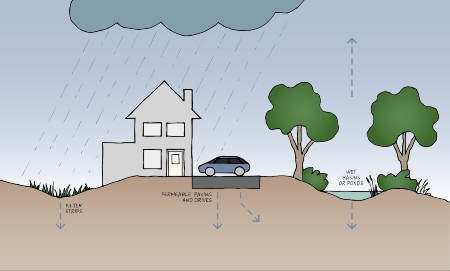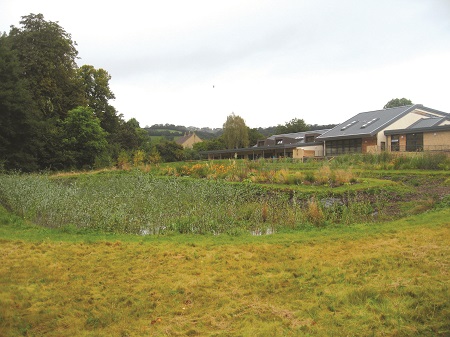Sustainable urban drainage system (SUDS)
As cities grow, the amount of land we cover with impermeable surfaces such as tarmac, increases. As our climate changes, it is predicted that we will get more extreme weather including severe rain storms.
When it rains heavily, drains cannot cope and this can lead to problems such as flash flooding. Guttering and drainage systems need to be designed with increased rainfall in mind as part of a climate change adaptation strategy.
Sustainable Urban Drainage systems can be incorporated to reduce the potential impact of new and existing developments in terms of surface water drainage.
Simple, natural solutions can often be possible although for some sites engineering options will need to be explored.
Sustainable drainage is a requirement of the Flood and Water Management Act 2010, which is enforced through the planning system.
Green roofs can help reduce pollution and surface water run-off and are particularly useful in dense urban areas.
The solution is to introduce permeable surfaces on paths, drives and car parks, so that when it rains, the ground absorbs the water and the sewage system does not become over burdened.
Case study - Weston All Saints Primary School, Bath
Image showing the Sustainable Urban Drainage system at Weston All Saints Primary School, Bath
This scheme shows that with intelligent design SUD systems can incorporate natural play space and bring visual interest and opportunities for new habitats.
Useful links
Susdrain is a community for sharing information on sustainable drainage.
The free UK Rain Gardens Guide offers guidance for urban rain gardens.
Livingroofs.org have information on various types of green roofs.


